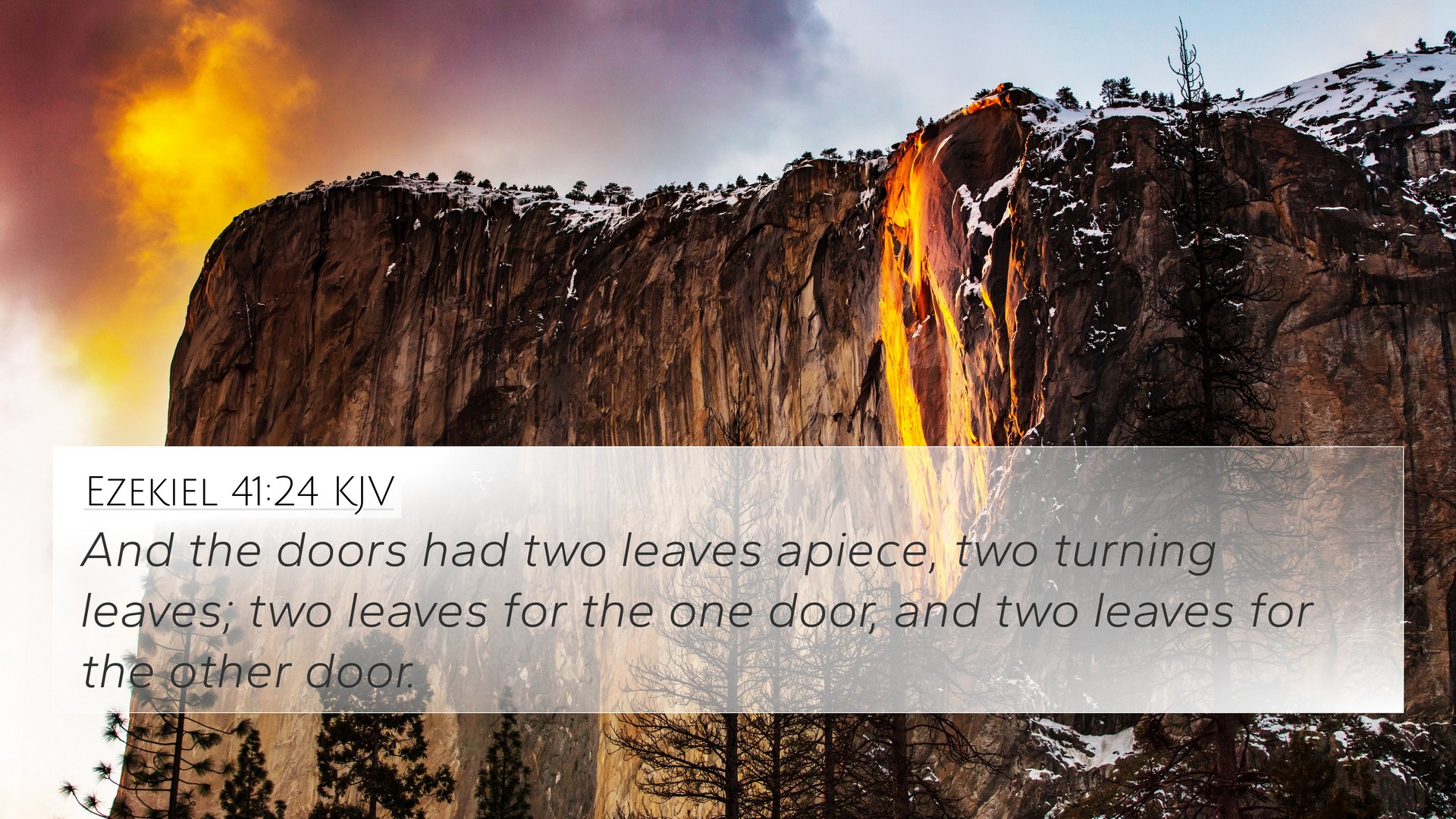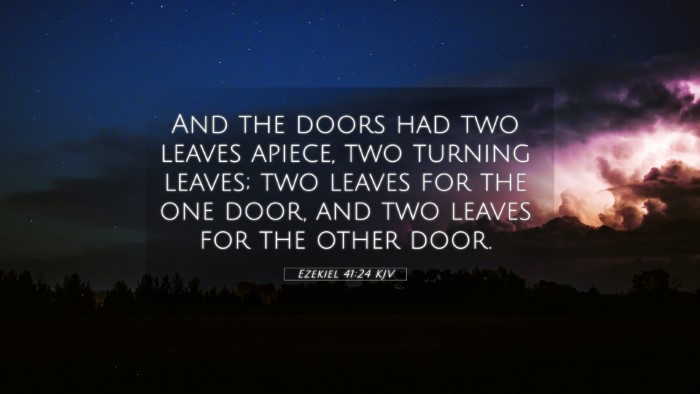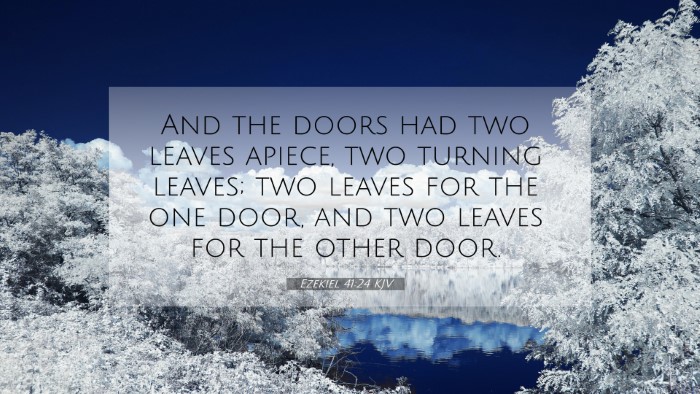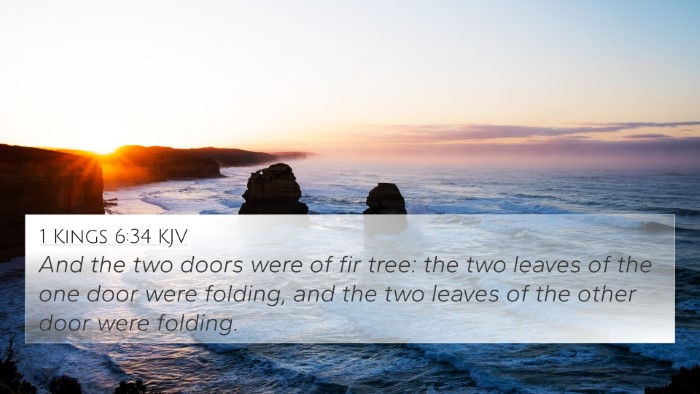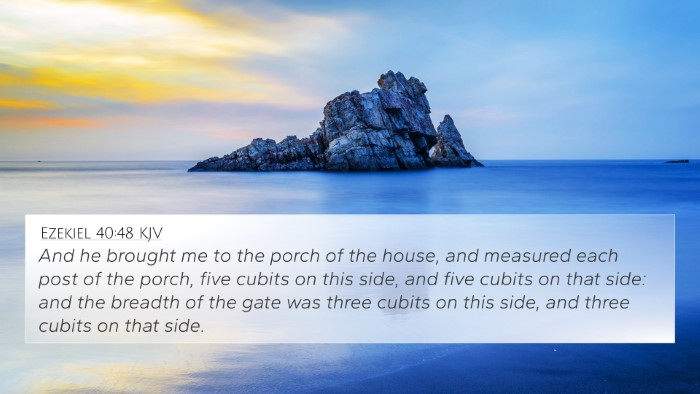Ezekiel 41:24 - Biblical Interpretation and Meaning
Ezekiel 41:24 states, "And each door had two leaves; two turning leaves: so that there were two doors for the one door." This verse, while seemingly straightforward, possesses deeper symbolic significance that can be elaborated through comparative analysis of biblical texts and themes.
In examining this verse, we connect with the structural complexity of the temple described in Ezekiel's vision. The doors themselves, with their two leaves, can symbolize the dual aspects of entry into the divine presence—representing both exclusivity and accessibility.
Insights from Commentaries
-
Matthew Henry's Commentary:
Matthew Henry elaborates on the nature of the temple's construction, emphasizing its meticulous design and how the features, including the doors, convey a sense of holiness. The two-leaved doors signify that access to God is granted through careful observance of His holiness and the requirements of the Law.
-
Albert Barnes' Notes:
Albert Barnes presents the interpretation that the two doors represent the twofold nature of the temple—the material and spiritual. The symbolism points towards Christ as the ultimate door that leads believers into the presence of God (John 10:9).
-
Adam Clarke's Commentary:
Adam Clarke further elucidates the mechanics of the doors, hinting at their theological implications. The operation of opening and closing is likened to the covenant relationship between God and humanity—inviting those who are righteous to enter while keeping the unclean away.
Thematic Connections
By understanding Ezekiel 41:24 in its context, we can explore its thematic connections throughout Scripture. The layout and features of the temple echo earlier constructions, including the Tabernacle and Solomon's Temple, as seen in:
- Exodus 26:31-33: Description of the veil and its significance.
- 1 Kings 6:31-32: The doors of the inner sanctuary and their two-leaf design.
- Matthew 27:51: The tearing of the temple curtain at Jesus’ death, symbolizing direct access to God.
- John 10:7: Jesus as the door for the sheep, inviting believers into a safe relationship with God.
- Revelation 21:25: The eternal dwelling of God with humanity where there is no need for temple doors.
- Hebrews 10:19-20: The new and living way opened through the flesh of Jesus.
- Isaiah 26:2: An invitation to enter the righteous nation for those faithful to God's precepts.
Cross-Referencing Biblical Texts
Exploring cross-references is crucial for understanding the interconnectivity of Scripture. The relationships built through scripture can facilitate a deeper comprehension of key themes, such as access to God, the significance of holiness, and the duality of Jesus' nature.
Tools for Cross-Referencing
To facilitate your study of Bible cross-references, you may employ various tools such as:
- Bible concordance for locating thematic words and phrases.
- Bible cross-reference guide for exploring relationships between verses.
- Bible reference resources to provide a comprehensive view of similar passages.
- Digital cross-reference Bible study tools for an easier search experience.
- Cross-reference Bible study methods to engage in deeper scriptural analysis.
Conclusion
In summary, Ezekiel 41:24 holds significant theological weight beyond its literal reading. By engaging in comparative Bible verse analysis and thorough cross-referencing, one can discern the breadth of meaning within this text, linking it to various other scriptures that echo its themes.
This verse invites believers to contemplate their access to God, highlighting the rich, interconnected nature of Scripture that continues to inform and shape vital Christian teachings.
